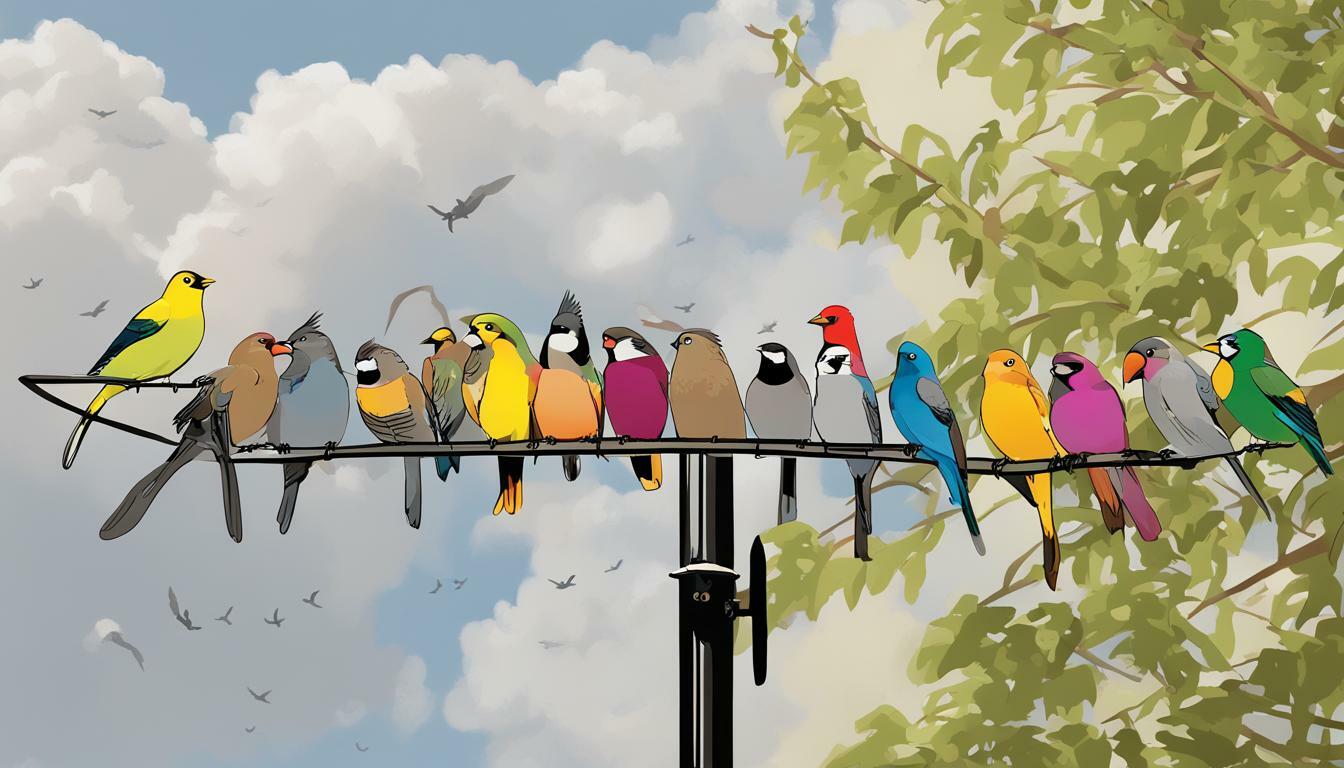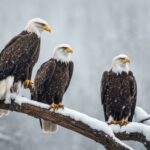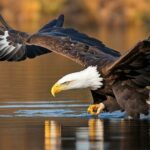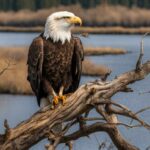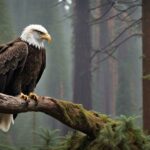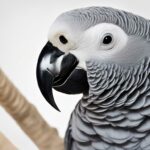Have you ever wondered how birds seem to know where to find food? It turns out that these feathered creatures have a complex communication system that allows them to share information about food locations with each other. Bird communication and social foraging behavior are fascinating topics that have been studied extensively by researchers.
Avian communication is a complex process that involves a variety of signals, including vocalizations and visual cues. Birds use these signals to communicate with each other about a range of topics, including food sources.
Social foraging is another interesting behavior that has been observed in many bird species. Rather than foraging alone, birds sometimes engage in cooperative feeding to increase their chances of finding food. This behavior requires the birds to communicate with each other and share information about food sources.
Key Takeaways:
- Birds have a sophisticated communication system that allows them to share information about food locations.
- Avian communication involves a range of signals, including vocalizations and visual cues.
- Social foraging behavior is observed in many bird species, and requires birds to communicate with each other and share information about food sources.
Understanding Bird Communication
Birds have a remarkable ability to communicate with each other through a variety of signals and behaviors. Communication plays a crucial role in flock dynamics, social behavior, and foraging strategies of birds. Let’s explore some of the ways in which birds communicate:
Bird Signals
Visual signals are a vital component of bird communication. Birds use a range of visual cues, such as body posture, wing displays, and tail flicking, to express a variety of emotions, including aggression, submission, or fear. For example, the courtship displays of male birds involve intricate visual signals to impress females and establish dominance over other males.
Similarly, vocalizations are an essential component of bird communication and offer valuable insights into their behavior. Birds use a wide range of calls and songs, each conveying a different message. For instance, many bird species have alarm calls to alert others about the presence of a predator.
Flock Dynamics
Birds are highly social animals, often seen traveling and foraging together in flocks. Flock dynamics are strongly influenced by social hierarchies, where dominant birds take the lead in decision-making. For instance, a flock of birds may use a voting system to decide on a direction to fly.
In summary, birds rely on a combination of vocal and visual signals to communicate, and flock dynamics play an essential role in shaping their behavior.
Social Foraging Behavior in Birds
When it comes to finding food, birds often use a social approach known as social foraging. Social foraging is when birds work together to locate and obtain food, increasing their chances of success. Within a group of birds, individuals may share information about food sources and help guide others to the location.
Food sharing is a common element of social foraging behavior in birds. When one bird finds food, they may call out to others in the group to alert them. This not only helps others within the group find food, but also strengthens the social bonds between birds. Studies have shown that birds are more likely to share food and cooperate in finding food when they have established social relationships with each other.
Information sharing is also an important aspect of social foraging behavior. Birds may use various signals and communication methods to share information about food sources. For example, a bird may use a specific vocalization or behavior to indicate the presence of food. Other birds within the group can then use this information to locate the source of food.
| Types of Food Sharing | Explanation |
|---|---|
| Reciprocal Sharing | When birds take turns feeding each other, often in pairs or small groups. |
| Communal Feeding | When birds feed together at the same food source, without any individual ownership. |
| Information Sharing | When birds use vocalizations or other signals to indicate the presence of food to others in the group. |
Social foraging behavior in birds is complex and can vary depending on the species and the particular environment they live in. However, the general principle is that birds are more likely to successfully find food when they work together and share information with each other.
Strategies for Finding Food
Birds have adapted a variety of strategies to locate food in their environment. These strategies depend on the type of food the birds consume and the habitat they occupy. Understanding bird feeding strategies is crucial to decoding their foraging behavior, which is a complex process that involves multiple sensory cues.
Visual cues: Many birds rely on visual cues to locate food. These cues may include the color, shape, and texture of food items. Some birds, such as raptors, have excellent vision and are able to spot small prey from great distances.
| Examples: | Species: |
|---|---|
| Hovering over water and diving to catch fish | Osprey |
| Stalking prey on the ground or in trees | Catbirds |
Memory: Some birds have excellent memory and can remember the location of food sources over long periods. They may also remember feeding territories and return to them year after year.
Observation: Many birds use observation to locate food. They observe the behavior of other animals, especially insects, and use this information to find food. They may also follow other birds to food sources.
Group foraging: Some bird species forage in groups, an activity called social foraging. In this situation, birds work together to locate and capture food. Social foraging can help birds increase their efficiency and decrease their predation risk. It is also a way for birds to share information about food sources within a group.
Bird feeding strategies are diverse and complex, reflecting the ingenuity and adaptability of these animals. By understanding these strategies, we can gain insight into the behavior of birds and their interactions with their environment.
Evidence of Food Sharing Among Birds
Many bird species engage in social foraging behavior, which involves working together to increase their chances of finding food. While some birds forage alone, others form groups to search for food together. Research has shown that birds in these groups often share information about food locations, indicating that they may indeed tell each other where food is.
One example of food sharing in birds is demonstrated by a study of western scrub jays. These birds were observed hiding food and then calling out to their flockmates to attract them to the location. This behavior suggests that the scrub jays have an understanding of their flockmates’ hunger levels and are willing to share food with those who need it.
Another example of food sharing among birds is seen in the African fork-tailed drongo. These birds have been observed using alarm calls not only to warn of predators but also to trick other birds into leaving their food behind. The drongos then swoop in and steal the abandoned food.
Research has also shown that birds may use visual cues to indicate the presence of food to their flockmates. For example, some bird species will engage in a behavior called “tidbitting,” where one bird picks up a piece of food and then displays it to the others in the group, encouraging them to come over and share in the find.
Overall, the evidence suggests that social foraging behavior in birds involves not only working together to find food but also sharing information about food locations and sometimes even actively guiding others to food sources. This behavior highlights the complex communication and social behavior of birds and their unique ability to cooperate with each other in the search for food.
The Role of Vocalizations in Food Communication
Birds have a variety of ways to communicate with each other, including vocalizations. When it comes to food communication, vocalizations play a significant role in avian communication. Birds use a range of calls and songs to signal the presence of food and communicate its location to their flock members.
One of the most common vocalizations used by birds to signal food is the “seep” call. This call is used by many bird species, including chickadees and nuthatches, to indicate the presence of food nearby. Other birds, such as woodpeckers, may use drumming sounds to communicate about food.
However, it’s not just about the type of call, but also the context in which it’s used. A call that indicates food in one situation may not hold the same meaning in another. For example, a particular call may signal food during breeding season, but not during the winter months when food is more abundant.
Additionally, birds may also use specific calls to communicate the type of food available. For example, some bird species have different calls for insects versus seeds. This allows their flock members to quickly determine the type of food available and whether it’s worth investigating.
It’s important to note that not all birds use vocalizations to communicate about food. Some bird species may use visual signals, such as body language, to indicate food locations. For example, a bird may tilt its head in a certain direction to signal the presence of food.
In conclusion, vocalizations play a crucial role in food communication among birds. The type of call, context, and even the type of food being communicated can all affect the meaning behind a bird’s vocalization. A better understanding of these vocalizations can provide valuable insights into the complex social lives of birds.
Conclusion
In conclusion, birds do communicate with each other to share information about food locations. Through vocalizations, visual signals, flock dynamics, and cooperative feeding, birds have been observed to actively guide each other to food sources. Scientific studies and examples provide clear evidence of food sharing among birds, indicating that communication plays a crucial role in bird behavior. However, while birds do communicate about food, the complexity of bird communication and social behavior cannot be underestimated. Foraging strategies, memory, and observation are also significant factors in locating food sources. Overall, the interplay between communication, social behavior, and foraging strategies highlights the remarkable abilities of birds. Their ability to communicate and work together to find food is just one of the many fascinating aspects of avian behavior.Do Male Birds Have Testicles?
In the fascinating world of avian reproduction, birds and the mystery of testicles arise. Surprisingly, male birds do possess testicles, although they differ greatly from those of mammals. Found within the body cavity, these testicles are absent externally. Evolution has adapted birds’ reproductive organs to ensure their efficient flying abilities while still enabling successful fertilization.
FAQ
Q: Do birds communicate to share information about food locations?
A: Yes, birds do communicate with each other to share information about food locations. They use various signals and behaviors to indicate the presence of food and guide others to it.
Q: What are some ways birds communicate with each other?
A: Birds communicate through vocalizations, visual signals, and flock dynamics. They use calls, songs, body postures, and movements to convey information to their fellow birds.
Q: How do birds engage in social foraging behavior?
A: Birds engage in social foraging behavior by cooperatively searching and feeding for food. They may share information about food sources within their group and coordinate their movements to maximize their chances of finding food.
Q: What strategies do birds use to find food?
A: Birds use various strategies to find food, such as visual cues, memory, and observation. They may scan the environment, remember previous food sources, and learn from the foraging behavior of other birds.
Q: Is there evidence of birds sharing information about food locations?
A: Yes, scientific studies have provided evidence of birds sharing information about food locations. There have been observations of birds actively guiding others to food sources and cooperative feeding behavior.
Q: What is the role of vocalizations in food communication among birds?
A: Vocalizations play a significant role in food communication among birds. Different calls and songs are used to signal the presence of food and communicate its location to other birds. Vocalizations can also help coordinate foraging activities within a group.

